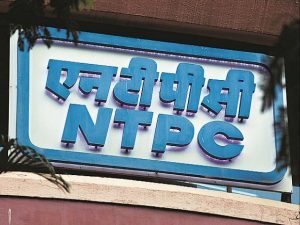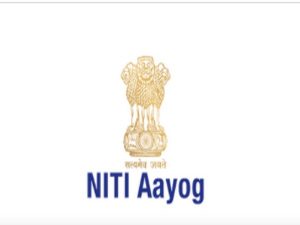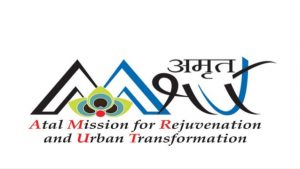Today Current Affairs: 2ndt October 2021 for UPSC IAS exams, State PSC exams, SSC CGL, State SSC, RRB, Railways, Banking Exam & IBPS, etc
Table of Contents
What Is Green Term Loan?

NTPC Renewable Energy (NTPC-REL), a subsidiary of NTPC, has signed its first Green Term Loan agreement for installation of Solar Projects in Rajasthan & Gujarat.
- NTPC-REL is also constructing India’s largest single local solar power park of 4.75 GW in Kutch.
- NTPC is taking various steps to make its energy portfolio greener by adding significant capacities of renewable energy sources.
About ‘Green Loan’:
- A green loan is a form of financing that seeks to enable and empower businesses to finance projects which have a distinct environmental impact, or rather, which are directed towards financing ‘green projects’.
- It will help raise corporate value, by demonstrating that they are actively promoting Green Projects by procuring Green Loans, which could possibly earn them public acceptance.
- This will also help in fulling Corporate Social Responsibility targets.
- By providing Green Loans, lenders can support the realization of the environmental benefits that contribute to creating a sustainable society, while simultaneously gaining returns on their lending.
- An increase in Green Loans and Green Deposits will enhance individual awareness of Green Loans.
- An increase in Green Loans is expected to increase private funds in Green Projects, contributing to the substantial reduction of GHG (GreenHouse Gas) emissions and the prevention of degradation of natural capital.
- The promotion of Green Projects can lower energy costs, strengthen energy security, revitalize the regional economy, and enhance resilience in the event of disasters.
2nd Global Fintech Fest-2021:

The Union Minister of Commerce & Industry, while addressing the 2nd Global Fintech Fest-2021 said, “At 87%, India has the highest FinTech adoption rate in the world against the global average of 64%.”
- Investment inflow in the Fintech sector has gone up to $10Bn since it started in 2016.
- India is today one of the fastest growing Fintech markets with more than 2,100 FinTechs.
- A lot of Indian Fintech markets are unicorns and India’s market is currently valued at $31 Bn, and expected to grow to $84 Bn by 2025.
- Our MSMEs have also rapidly adopted FinTech solutions whether for credit, payments, accounting & tax filing. Government has recently launched the Open Credit Enablement Network (OCEN) & Account Aggregator (AA) framework.
Performance Assessment Report Of District Hospitals:NITI Aayog

NITI Aayog today released a performance assessment report of district hospitals in India, titled Best Practices in the Performance of District Hospitals.
- The report is an outcome of collaboration with the Ministry of Health and Family Welfare and WHO India.
- The National Accreditation Board for Hospitals and Healthcare Providers, a constituent board of the Quality Council of India, conducted the on-ground data validation.
- This report is the first-ever performance assessment of district hospitals undertaken across the country.
- The assessment framework covers 10 Key Performance Indicators across the domains of Structure and Output.
- A total of 707 district hospitals across all States and Union Territories participated in the performance assessment.
- The Health Management Information System (HMIS) data for the year 2017–18 has been used as baseline for this exercise.
- The framework classifies hospitals in three categories: Small Hospitals (less than or equal to 200 beds), Mid-sized Hospitals (between 201–300 beds) and Large Hospitals (more than 300 beds).
- Overall, 75 district hospitals across 24 States and Union Territories emerged as top performers on indicators ranging from availability of beds, medical and paramedical staff, core health and diagnostic testing services to outputs such as bed occupancy rate and number of surgeries per surgeon.
AMRUT 2.0:

Prime Minister Shri Narendra Modi will launch Atal Mission for Rejuvenation and Urban Transformation 2.0 on 1st October 2021, at Dr. Ambedkar International Centre, New Delhi.
- AMRUT 2.0 aims to provide 100% coverage of water supply to all households in around 4,700 urban local bodies by providing about 2.68 crore tap connections and 100% coverage of sewerage and septage in 500 AMRUT cities by providing around 2.64 crore sewer/ septage connections, which will benefit more than 10.5 crore people in urban areas.
- AMRUT 2.0 will adopt the principles of circular economy and promote conservation and rejuvenation of surface and groundwater bodies.
- The Mission will promote data led governance in water management and Technology Sub-Mission to leverage latest global technologies and skills.
- ‘Pey Jal Survekshan’ will be conducted to promote progressive competition among cities.
- The outlay of AMRUT 2.0 is around ₹2.87 lakh crore.
- AMRUT has been ensuring water security by adding 1.1 crore household water tap connections and 85 lakh sewer connections, thus benefiting more than 4 crore people.
Swachh Bharat Mission-Urban 2.0:

Prime Minister Narendra Modi will launch Swachh Bharat Mission-Urban 2.0 on 1st October 2021, at Dr. Ambedkar International Centre, New Delhi.
- SBM-U 2.0 envisions to make all cities ‘Garbage Free’ and ensure grey and black water management in all cities other than those covered under AMRUT, make all urban local bodies as ODF+ and those with a population of less than 1 lakh as ODF++, thereby achieving the vision of safe sanitation in urban areas.
- The Mission will focus on source segregation of solid waste, utilizing the principles of 3Rs (reduce, reuse, recycle), scientific processing of all types of municipal solid waste and remediation of legacy dumpsites for effective solid waste management.
- The outlay of SBM-U 2.0 is around ₹1.41 lakh crore.
- Impact of SBM-U
- Swachhta has become a Jan Andolan today.
- All urban local bodies have been declared Open Defecation Free (ODF) and 70% solid waste is being scientifically processed now.
One Sun, One World, One Grid (OSOWOG):

India and the UK are likely to announce a joint declaration on “one sun, one world, one grid” — or OSOWOG at the upcoming Conference of Parties (COP26).
- The UN Climate Change Conference, or COP26, is scheduled to be held between 31st October and 12th November in Scotland.
- The concept of OSOWOG is what the British have called a green grid.
- The idea behind the concept is a trans-national electricity grid supplying solar power across the globe.
OSOWOG or the Green Grid:
- The vision behind the OSOWOG is ‘The Sun Never Sets’ and is a constant at some geographical location, globally, at any given point of time.
- This is by far one of the most ambitious schemes undertaken by any country (India) and is of global significance in terms of sharing economic benefits.
- It has been taken up under the technical assistance program of the World Bank.
- The OSOWOG plan may also leverage the International Solar Alliance (ISA), co-founded by India that has 80 countries as members.
- With India in the middle, the solar spectrum can easily be divided into two broad zones, which are:
- Far East including countries like Myanmar, Vietnam, Thailand, Lao, Cambodia etc.
- Far West covering the Middle East and the Africa Region.
- Three Phases of the Plan:
- First Phase: It will entail interconnectivity within the Asian continent.
- Second Phase: It will add Africa.
- Third Phase: It is about global interconnection.
Significance of the Project:
- Help all the participating entities in attracting investments in renewable energy sources as well as utilizing skills, technology and finances.
- Lead to reduced project costs, higher efficiencies and increased asset utilization for all the participating entities.
- Resulting economic benefits would positively impact poverty alleviation and support in mitigating water, sanitation, food and other socio-economic challenges.
- Allow national renewable energy management centres in India to grow as regional and global management centres.
- This move, during the time of the Covid-19 pandemic, gives India the opportunity to be seen as taking a lead in evolving global strategies.
SACRED Portal For Elderly:

In a first of its kind move, the government has come up with an online employment exchange platform to cater to senior citizens seeking job opportunities.
- The portal developed by the Ministry of Social Justice and Empowerment is named Senior Able Citizens for Re-Employment in Dignity (SACRED).
- The International Day of Older Persons is observed on 1st October each year.
- Citizens above 60 years of age can register on the portal and find jobs and work opportunities.
- The Employment Portal will serve not only the senior citizens seeking employment, but also the employers, the Self Help Groups (SHGs), the senior citizens gaining skills, and other agencies or individuals.
- An amount of Rs. 10 Cr would be provided for funding for the platform development along with maintenance grant of @ Rs. 2 Cr per year for 5 years.
- The portal is shaped on the recommendations of the Empowered Expert Committee (EEC) report on startups for the elderly.
- There is a sharp rise in India’s elderly population and thrust is on creating an ecosystem that supports their needs more holistically.
- There are 110 million elders in this country, who are above the age of 60.
- According to the Longitudinal Ageing Study of India (LASI), India will have over 319 million elderly by 2050 compared to the 120 million now.
- More than 50% senior citizens are found active as per the LASI report 2020. Many senior citizens having experience, time and energy can be used by the business enterprises looking for stable employees with experience.
DigiSaksham:

Union Minister for Labour and Employment launched DigiSaksham – a digital skills programme to enhance the employability of youth by imparting digital skills that are required in an increasingly technology driven era.
- This joint initiative with Microsoft india is an extension of the Government’s ongoing programs to support the youth from rural and semi-urban areas.
- Through DigiSaksham initiative, free of cost training in digital skills including basic skills as well as advance computing, will be provided to more than 3 lakh youths in the first year.
- The initiative gives priority to the job-seekers of semi urban areas belonging to disadvantaged communities, including those who have lost their jobs due to Covid-19 pandemic.
- Under the DigiSaksham initiative, there will be basically three types of training viz. Digital Skills – Self paced learning, VILT mode training (Virtual Instructor led) and ILT mode training (Instructor led).
- The ILT training which is in person training would be conducted at the Model Career Centres (MCCs) and National Career Service Centres (NCSC) for SCs/STs across the country.
- Through this initiative, nearly one crore active jobseekers registered on National Career Service (NCS) Portal will be able to access training in areas like Java Script, Data Visualisation, Advance Excel, Power Bi, HTML, Programming languages etc, equipping them with the skills required in a digital economy.
- DigiSaksham will be implemented in the field by Aga Khan Rural Support Programme India (AKRSP-I).
- The DigiSaksham initiative will equip more than 300,000 youth in technical skills in the first year.
NCS Portal:
- The Jobseekers can access the training through National Career Service (NCS) Portal.
- The Ministry of Labour and Employment is implementing the National Career Service (NCS) Project as a Mission Mode Project for transformation of the National Employment Service to provide a variety of employment related services like job matching, career counselling, vocational guidance, information on skill development courses, apprenticeship, internships etc.




